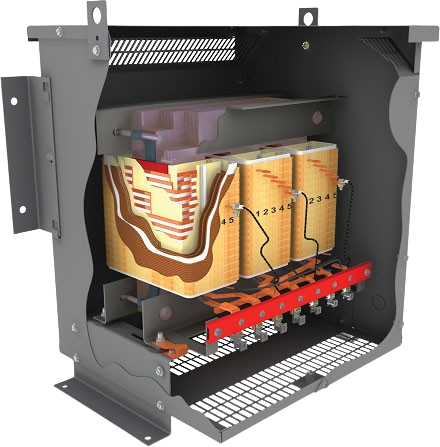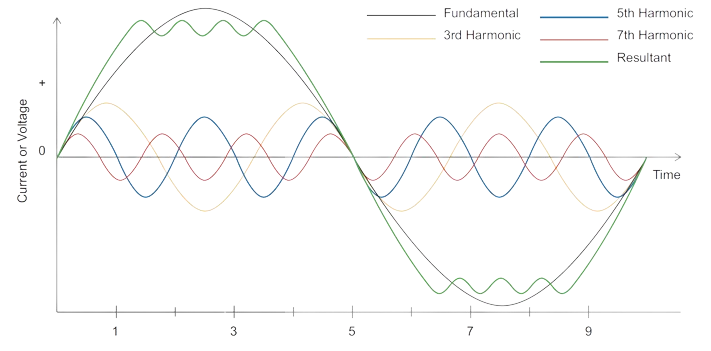K-FACTOR RATED TRANSFORMER
Today's modern electronic, electric components and circuitry such as computers, copiers, printers, fax machines and display terminals utilize switching mode power supplies for their operation. These switching mode power supplies are non-linear in nature. A non-linear load draws current in pulses from the power source thereby creating harmonic distortion. These harmonics currents cause significant power system problems such as:
Circuit breakers and fuses blowing far below current ratings
Neutrals in transformers and panel boards are much hotter than their ratings
Distributions Transformers are overheating even when operating well within their specified nameplate rating
The K value is an index of a transformer’s ability to withstand harmonic currents without exceeding its maximum temperature rise rating while supplying power containing harmonic content to its intended loads. The K-rating number of the transformer (1, 4, 13, 20) is in indication of how much a transformer must be de-rated to handle a definite non-linear load, or how much it must be oversized to handle the same load. The calculation of K-factor for a given load is outlined in IEEE C57.110 but the table below provides a basic summary of the types of loads each K-factor is suitable for.
-
Motors, Incandescent Lighting, Resistance Heating, Motor Generators (without solid state drives)
Little to no harmonic generating loads, typically <15%
-
HID Lighting, Induction Heaters, Welders, UPS with optional input filtering, PLC and solid state controls
Up to 35% of loads generate harmonics
-
Multiple receptacle circuits in health care facilities, UPS without optional input filtering, Production or assemble line equipment, Schools and Classroom facilities
35–75% of loads generate harmonics
-
SCR Variable Speed Drives, Circuits with exclusive data processing equipment, Critical care facilities and Hospital operating rooms
75%–100% of loads generate harmonics





